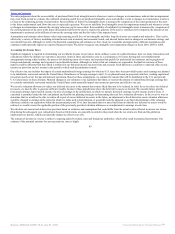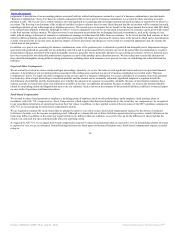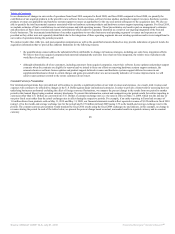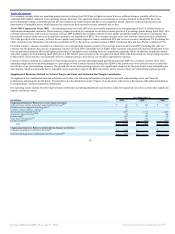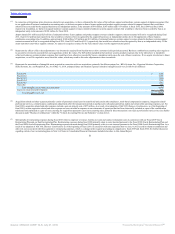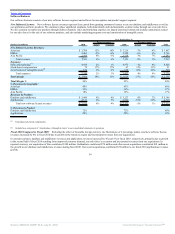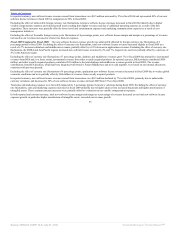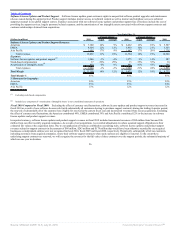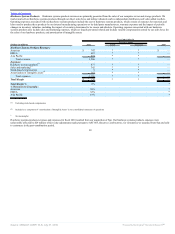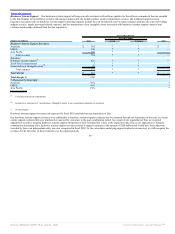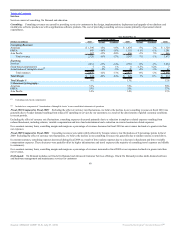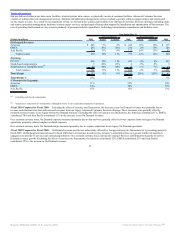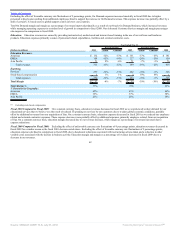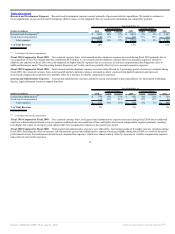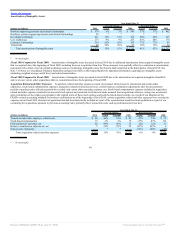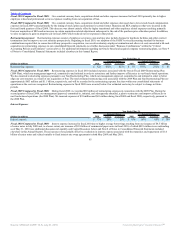Oracle 2009 Annual Report Download - page 59
Download and view the complete annual report
Please find page 59 of the 2009 Oracle annual report below. You can navigate through the pages in the report by either clicking on the pages listed below, or by using the keyword search tool below to find specific information within the annual report.
Table of Contents
In reported currency, new software license revenues earned from transactions over $0.5 million increased by 2% in fiscal 2010 and represented 49% of our new
software license revenues in fiscal 2010 in comparison to 50% in fiscal 2009.
Excluding the effect of unfavorable foreign currency rate fluctuations, total new software license expenses increased in fiscal 2010 primarily due to higher
variable compensation expenses and related payroll taxes resulting from higher revenues and due to additional operating expenses as a result of the Sun
acquisition. These increases were partially offset by lower travel and entertainment expenses and marketing communication expenses as a result of cost
management initiatives.
Excluding the effect of favorable foreign currency rate fluctuations of 4 percentage points, new software license margin and margin as a percentage of revenues
increased as our revenues increased at a faster rate than our expenses.
Fiscal 2009 Compared to Fiscal 2008: Our new software license revenues growth was unfavorably affected by foreign currency rate fluctuations of 6
percentage points in fiscal 2009. Excluding the effect of currency rate fluctuations, total new software license revenues increased slightly in fiscal 2009 as a
result of a 7% increase in database and middleware revenues, partially offset by a 10% decrease in applications revenues. Excluding the effect of currency rate
fluctuations, the EMEA and Asia Pacific regions increased new software license revenues by 6% and 7%, respectively, and were partially offset by a decrease of
4% in the Americas region.
Excluding the effect of currency rate fluctuations of 7 percentage points, database and middleware revenues grew 7% in fiscal 2009 due primarily to incremental
revenues from BEA and, to a lesser extent, incremental revenues from other recently acquired products. In reported currency, BEA products contributed $459
million, and other recently acquired products contributed $21 million to the total database and middleware revenues growth in fiscal 2009. The revenue
contributions from BEA products, which had been integrated with Oracle’s Fusion Middleware and were sold together, were based on our internal allocations
consistent with previous periods.
Excluding the effect of currency rate fluctuations of 6 percentage points, application new software license revenues decreased in fiscal 2009 due to weaker global
economic conditions and were partially offset by $60 million of revenues from recently acquired products.
In reported currency, new software license revenues earned from transactions over $0.5 million declined by 7% in fiscal 2009, primarily due to unfavorable
currency variations, and decreased to 50% of new software license revenues in fiscal 2009 from 51% in fiscal 2008.
Total sales and marketing expenses were favorably impacted by 5 percentage points of currency variations during fiscal 2009. Excluding the effect of currency
rate fluctuations, sales and marketing expenses increased in fiscal 2009 primarily due to higher salaries from increased headcount and higher amortization of
intangible assets. These constant currency increases were partially offset by a reduction in our variable compensation expenses.
In both reported and constant currency, total new software license margin and margin as a percentage of revenues decreased as our total new software license
expenses growth, in particular higher amortization of intangible assets, exceeded our revenues growth.
55
Source: ORACLE CORP, 10-K, July 01, 2010 Powered by Morningstar® Document Research℠


